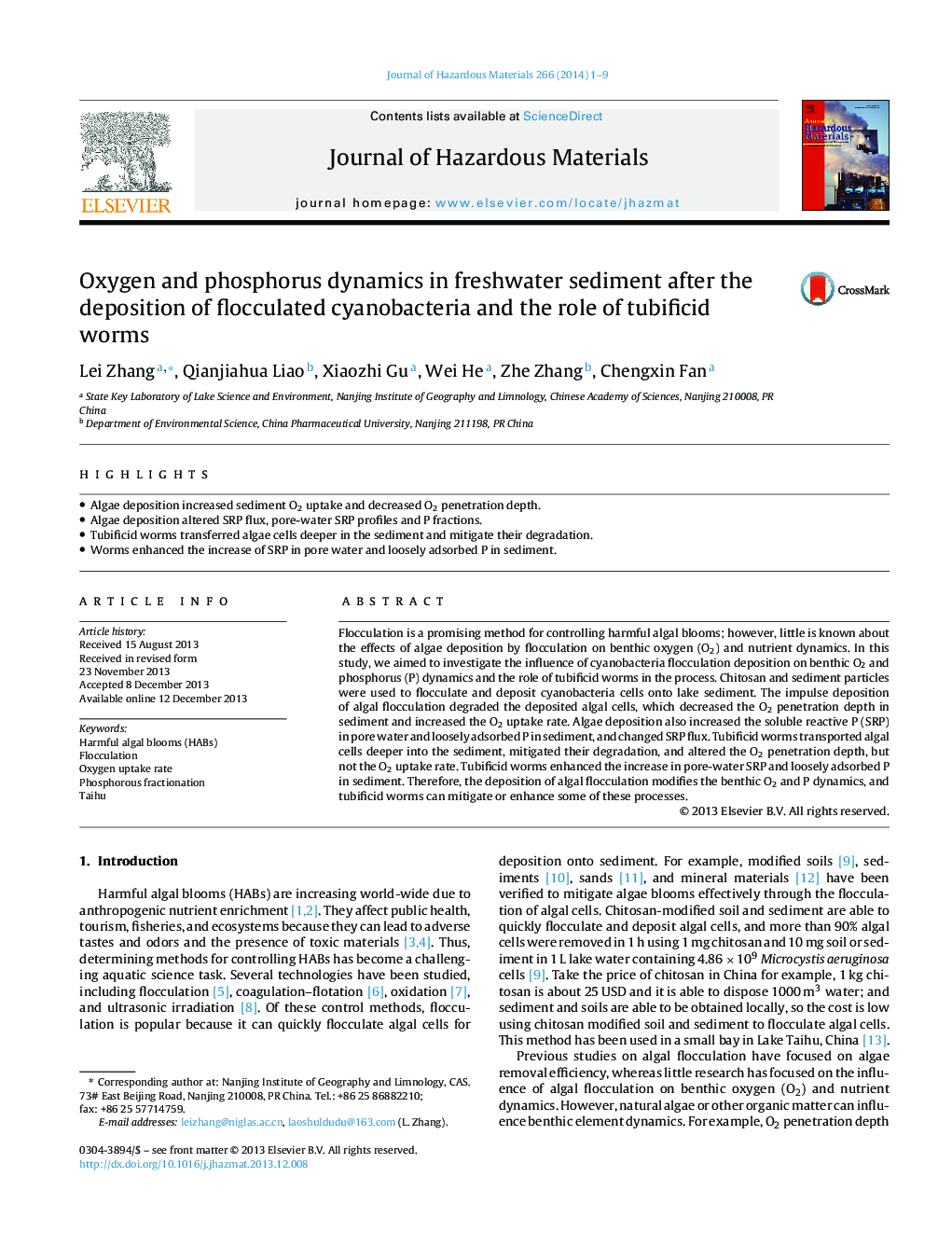| Article ID | Journal | Published Year | Pages | File Type |
|---|---|---|---|---|
| 576965 | Journal of Hazardous Materials | 2014 | 9 Pages |
Abstract
Flocculation is a promising method for controlling harmful algal blooms; however, little is known about the effects of algae deposition by flocculation on benthic oxygen (O2) and nutrient dynamics. In this study, we aimed to investigate the influence of cyanobacteria flocculation deposition on benthic O2 and phosphorus (P) dynamics and the role of tubificid worms in the process. Chitosan and sediment particles were used to flocculate and deposit cyanobacteria cells onto lake sediment. The impulse deposition of algal flocculation degraded the deposited algal cells, which decreased the O2 penetration depth in sediment and increased the O2 uptake rate. Algae deposition also increased the soluble reactive P (SRP) in pore water and loosely adsorbed P in sediment, and changed SRP flux. Tubificid worms transported algal cells deeper into the sediment, mitigated their degradation, and altered the O2 penetration depth, but not the O2 uptake rate. Tubificid worms enhanced the increase in pore-water SRP and loosely adsorbed P in sediment. Therefore, the deposition of algal flocculation modifies the benthic O2 and P dynamics, and tubificid worms can mitigate or enhance some of these processes.
Related Topics
Physical Sciences and Engineering
Chemical Engineering
Chemical Health and Safety
Authors
Lei Zhang, Qianjiahua Liao, Xiaozhi Gu, Wei He, Zhe Zhang, Chengxin Fan,
